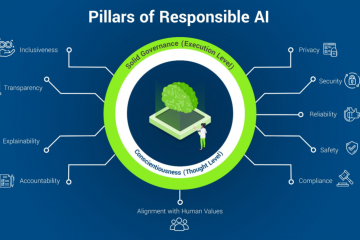In our increasingly digital world, software updates have become a regular part of our lives. Whether it’s your smartphone prompting you to install the latest OS version or your computer urging you to update your applications, these notifications are more than just minor inconveniences. They play a crucial role in maintaining the health, security, and functionality of your devices and applications. This article will explore why software updates are essential and how they benefit users and developers alike.
Understanding Software Updates
What Are Software Updates?
Software updates, also known as patches or upgrades, are pieces of code that are added to existing software. They can range from minor bug fixes to major feature additions or complete overhauls of the software’s architecture.
Types of Updates
- Security updates: Address vulnerabilities and protect against potential threats.
- Bug fixes: Correct errors or glitches in the software.
- Feature updates: Add new functionality or improve existing features.
- Performance updates: Optimize the software for better speed and efficiency.
The Importance of Security Updates
Protecting Against Cyber Threats
One of the primary reasons for software updates is to address security vulnerabilities. As cybercriminals constantly evolve their tactics, software developers must continually update their products to protect users against new threats.
Real-World Consequences of Ignoring Updates
Numerous high-profile data breaches and cyberattacks have occurred due to unpatched software vulnerabilities. For example, the WannaCry ransomware attack in 2017 primarily affected systems that had not installed a critical Windows security update.
Enhancing Performance and Stability
Fixing Bugs and Glitches
Software is complex, and despite rigorous testing, bugs often slip through to the released version. Updates allow developers to fix these issues, improving the overall stability and reliability of the software.
Optimizing Resource Usage
As developers learn more about how their software performs in real-world conditions, they can optimize it for better performance. Updates often include improvements that make the software run faster or use fewer system resources.
Adding New Features and Functionality
Evolving with User Needs
Software updates often introduce new features or enhance existing ones based on user feedback and changing market demands. This continuous improvement helps software remain relevant and useful over time.
Compatibility with New Technologies
As hardware and other software evolve, updates ensure that applications remain compatible with the latest technologies and standards.
The Impact on User Experience
Improved Usability
Many updates focus on enhancing the user interface or streamlining workflows, resulting in a better overall user experience.
Access to Latest Innovations
By keeping software up-to-date, users can take advantage of the latest innovations and features as soon as they’re available.
The Developer’s Perspective
Maintaining Software Quality
Regular updates allow developers to maintain and improve the quality of their software over time, ensuring it continues to meet user expectations.
Reducing Support Burden
By fixing known issues and improving functionality, updates can reduce the number of support requests developers receive, allowing them to focus on further improvements.
Challenges of Software Updates
User Resistance
Some users are hesitant to install updates due to concerns about changes in functionality, compatibility issues, or simply the inconvenience of the update process.
Potential for New Issues
Occasionally, updates can introduce new bugs or compatibility problems. However, responsible developers quickly address these issues with subsequent updates.
Best Practices for Managing Updates
Regular Update Schedule
Establish a routine for checking and installing updates across all your devices and applications.
Automatic Updates
When possible, enable automatic updates to ensure you’re always running the latest version of your software.
Backup Before Updating
Before installing major updates, it’s wise to back up your data to protect against potential issues during the update process.
The Future of Software Updates
Continuous Delivery
Many software developers are moving towards a model of continuous delivery, where smaller, more frequent updates are released instead of large, infrequent ones.
AI-Driven Updates
Artificial intelligence and machine learning are being leveraged to predict when updates are needed and even automate parts of the update process.
Conclusion
Software updates are a critical component of our digital ecosystem. They protect us from security threats, fix annoying bugs, introduce exciting new features, and ensure our software remains compatible with the latest technologies. While they may sometimes seem inconvenient, the benefits of staying up-to-date far outweigh the temporary disruption of the update process.
By understanding the importance of software updates and making them a regular part of our digital maintenance routine, we can enjoy safer, more stable, and more feature-rich experiences with our devices and applications. In our rapidly evolving digital world, staying up-to-date is not just a good practice—it’s essential for getting the most out of our technology.



0 Comments